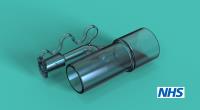 Add My Company
Add My Company
Sign In
DESIGNED FOR LIFE
03-06-2021

IT IS TIME TO RECONSIDER DESIGNED OBSOLESCENCE IN PRODUCT DESIGN
TODAY MORE THAN EVER, THROUGH INNOVATION, TECHNOLOGY AND GREAT DESIGN, EVERYDAY PRODUCTS CAN COMBINE FORM AND FUNCTION ADDING VALUE TO OBJECTS, SOLVING PROBLEMS AND IMPROVING PEOPLE’S LIVES. BUT HOW LONG SHOULD PRODUCTS LAST?
Consider the life expectancy of everyday mass-market objects – pens, electrical appliances, packaging, cars, telephones, cups, TVs… How often would you expect to replace them?
By definition, single-use products have a lifespan of just a few days, hours or sometimes minutes. Take a disposable coffee cup with a plastic lip. Both are designed to be manufactured in vast quantities using a range of plastics and wood pulp, consuming energy at every stage of the process. They are often then distributed around the world before ending up in your local coffee shop.
When you have enjoyed that takeaway latte, the useful life of the object finishes at that exact moment. Except that the cup’s continued existence requires even more resources in order for it to be recycled or more likely, buried in a landfill. Then there is a case in medical product design for example as with the C-Pap connector which we developed during the 2020 Covid-19 outbreak when hospitals were on the brink of having to consider reusing – single use medical devices, simply because the supply chain had collapsed due to international demand and logistics. It poses an interesting question on when single use is acceptable, certainly there is scope for the industry to consider how these devices are disposed of and recycled. Presently classed as Bio-Waste and not recycled.
DESIGNED FOR LIFE
3 June 2021
DESIGNED FOR LIFE?
IT IS TIME TO RECONSIDER DESIGNED OBSOLESCENCE IN PRODUCT DESIGN
TODAY MORE THAN EVER, THROUGH INNOVATION, TECHNOLOGY AND GREAT DESIGN, EVERYDAY PRODUCTS CAN COMBINE FORM AND FUNCTION ADDING VALUE TO OBJECTS, SOLVING PROBLEMS AND IMPROVING PEOPLE’S LIVES. BUT HOW LONG SHOULD PRODUCTS LAST?
Consider the life expectancy of everyday mass-market objects – pens, electrical appliances, packaging, cars, telephones, cups, TVs… How often would you expect to replace them?
By definition, single-use products have a lifespan of just a few days, hours or sometimes minutes. Take a disposable coffee cup with a plastic lip. Both are designed to be manufactured in vast quantities using a range of plastics and wood pulp, consuming energy at every stage of the process. They are often then distributed around the world before ending up in your local coffee shop.
When you have enjoyed that takeaway latte, the useful life of the object finishes at that exact moment. Except that the cup’s continued existence requires even more resources in order for it to be recycled or more likely, buried in a landfill. Then there is a case in medical product design for example as with the C-Pap connector which we developed during the 2020 Covid-19 outbreak when hospitals were on the brink of having to consider reusing – single use medical devices, simply because the supply chain had collapsed due to international demand and logistics. It poses an interesting question on when single use is acceptable, certainly there is scope for the industry to consider how these devices are disposed of and recycled. Presently classed as Bio-Waste and not recycled.
REUSE AND RECYCLE
Products that perform the same purpose better and with less environmental impact such as the reusable TOPL coffee cup are surely preferable. Having innumerable thousands of cycles and a useful lifespan that can be measured in years rather than minutes, here is a stark example of how a design can offer improved sustainability with built-in longevity and with better performance too.
How many old biros and disposable pens have you got hanging around in drawers and boxes? The fact that we can be prone to keeping objects even when they have actually stopped working might give us some insight as to our hopes of longevity as opposed to the frequent reality.
HOUSEHOLD CONSUMER PRODUCT DESIGN
Washing machines, PCs, Smartphones, vacuum cleaners… Nowadays, when a household product breaks down do you get it repaired or replace it?
9 times out of 10 it is probably easier, faster and sometimes cheaper to replace rather than repair – unless you DIY. And even then, that assumes that the parts required are available.
It is clear that the economic model of contemporary consumerism is oriented towards products that are just not designed to be repaired if they break.
SO HOW LONG SHOULD PRODUCTS BE DESIGNED TO LAST?
Our current expectation of the useful lifespan of products is certainly shorter than that of previous generations.
Turn of the century industrial designers erred on the side of solidity and robustness rather than run the risk of premature malfunction. The ‘end of life’ was probably not considered in the same way as it is today, given that products were typically designed with standard parts that could be readily changed – and not always from the original manufacturer.
DESIGNED OBSOLESCENCE
Most mass-market products such as consumer electronics are designed and tested to be functional over a certain number of given cycles. However once that is number is reached, performance loss, malfunction or even terminal failure becomes increasingly probable or even inevitable.
With not inconspicuous marketing, brands and manufacturers count on the consumer’s appreciation of a product’s performance rather the expectation of a long lifespan. But finding the ideal equilibrium between cost, performance, longevity and attractiveness is a precarious balancing act.
There is a perception that there is little commercial interest in selling just one product to last a lifetime – surely one of the motivations behind the notion of planned obsolescence.
ACCELERATING INNOVATION IN PRODUCT DESIGN
But if ‘old’ products do not render themselves obsolete, innovative new products with better functionality and more modern aesthetics probably will.
Bounds in technology combined with the product designer’s eternal aim of improving products, solving problems and making lives easier inevitably brings every previous generation of products closer to being a museum exhibit or part of a scrap heap.
Whether it occurs after ten seconds or ten years, the consideration of what happens to products after their useful life is still too often an afterthought for designers, manufacturers, governments and consumers. The environmental consequences of mass production and the sheer number of products in terms of raw materials, energy, air and water pollution and landfill has reached nothing short of catastrophic proportions on a global scale.
Deciding who is accountable for the sustainability of future products is a thorny question that will have to be addressed sooner or later.
EVOLUTION OR DESIGNED OBSOLESCENCE ?
This is a pertinent question given the speed and development of technology, the nature and expectations of a consumer society and the sustainability of materials and energy sources.
Is it possible to trade-off a shorter functional product life with more responsible ways of production and recycling? Product designers are invested in development and development is invested in change. As designers we take the responsibility seriously, as it has its part to play in consumerism. Like many things in life, balance is required, sustainable product design works when clients understand the value proposition and governments and markets support the objective of making things better without costing the earth.
FUTURE-PROOF PRODUCTS – SUSTAINABLE INNOVATION OR INNOVATIVE SUSTAINABILITY?
A lot depends on personal judgments about what is important – sustaining the rate of innovation or innovating to become sustainable.
Perhaps we can take a step in the latter direction by :
• Harnessing innovation and industrial design to once again embrace traditional values of solidity and longevity.
• Creating products that keep pace with the speed of technical development by being upgraded and repaired while still retaining commercial interest and consumer demand.
• Accepting individual and collective responsibility for the environmental impact of the products we design, manufacture and consume.
Turning the tide of current trends, future-proof products that are designed for life should mean built-in non-obsolescence.
There are lots of interesting ideas out there on how we can evolve our built environment sustainably. By that we also include all industrial design. We fully support the research being done by https://cfsd.org.uk/ on the 4th industrial revolution – The circular economy. Concepts born out of that research include Automated Disassembly , Products built to be upgraded using IOT as well as fostering customisation. We fully support the idea that products embody some “essence” that is more than the sum of its parts. Through thorough design at the highest level we can help consumers take care of their products, take ownership for them and responsibility for the resources they have consumed. As an industry we will rise to the challenge.
HAVE YOU GOT SUSTAINABLE PRODUCT DESIGN PROJECT YOU WANT TO DISCUSS?
At Flynn Product Design, we’re dedicated to working with individuals and companies on a one-to-one basis through all stages of the design process. Our one-to-one, confidential design workshops are a great way to explore the future potential of your product idea and to accompany you on your product development journey:
• Gaining a deep understanding of problems
• Challenging assumptions and preconceptions
• Exploring ideas and finding optimal solutions
• Prototyping
• Testing
• Preparation for Manufacturing
LET’S MAKE IT HAPPEN!
For more information on DESIGNED FOR LIFE talk to Flynn Product Design
Enquire Now
More Design Blogs
List your company on FindTheNeedle.

